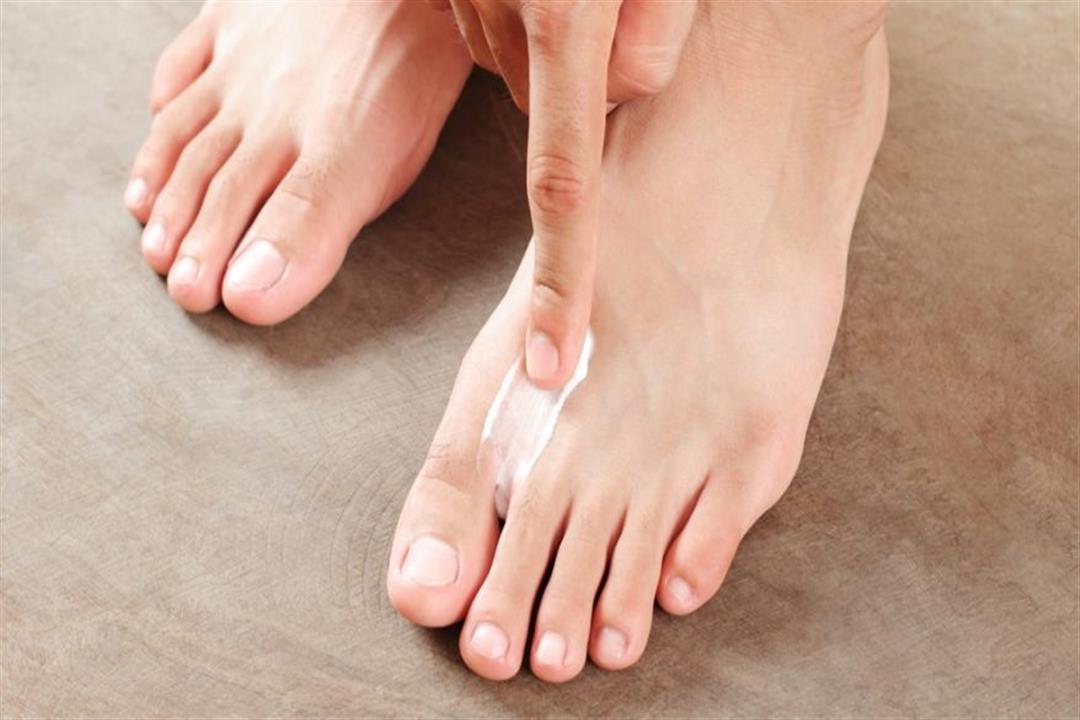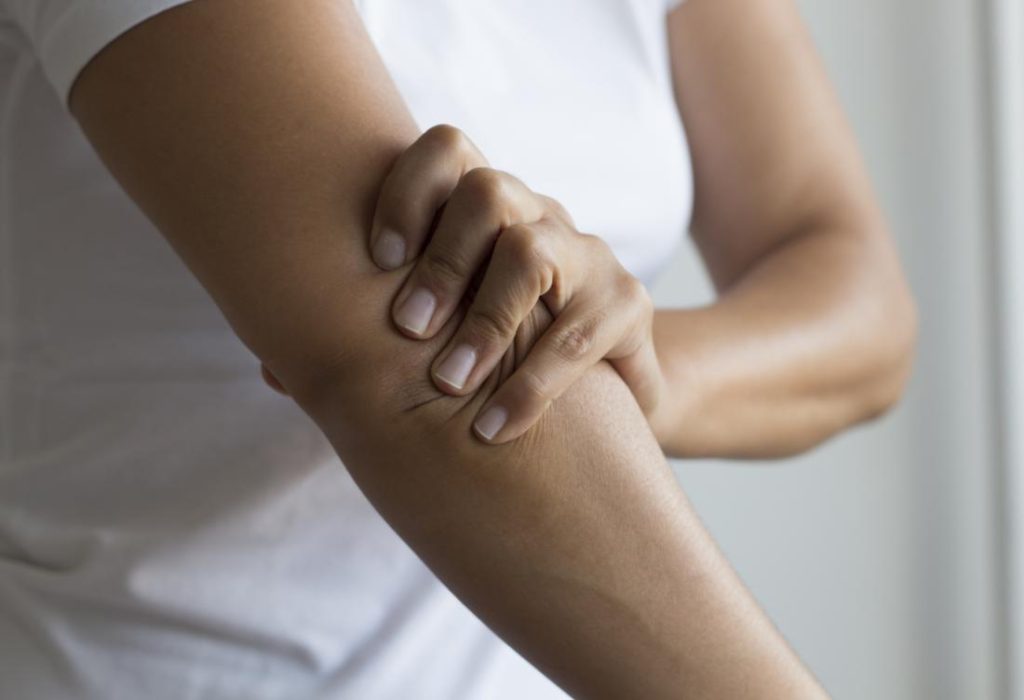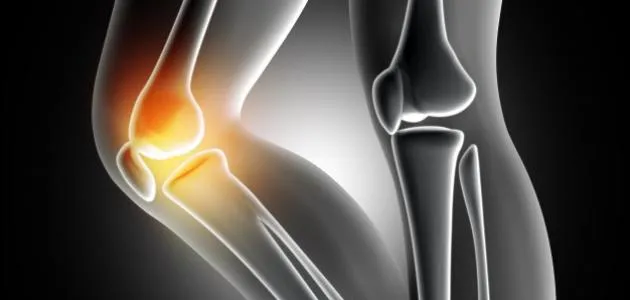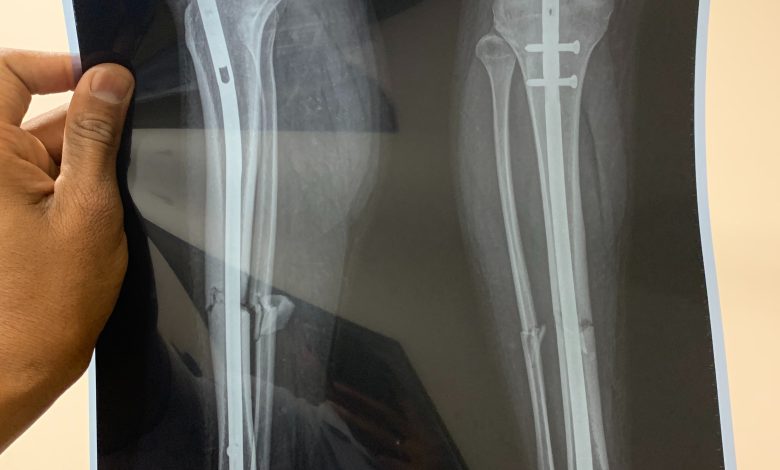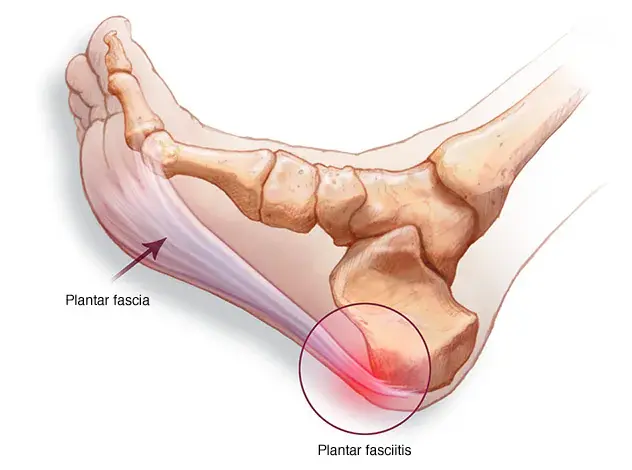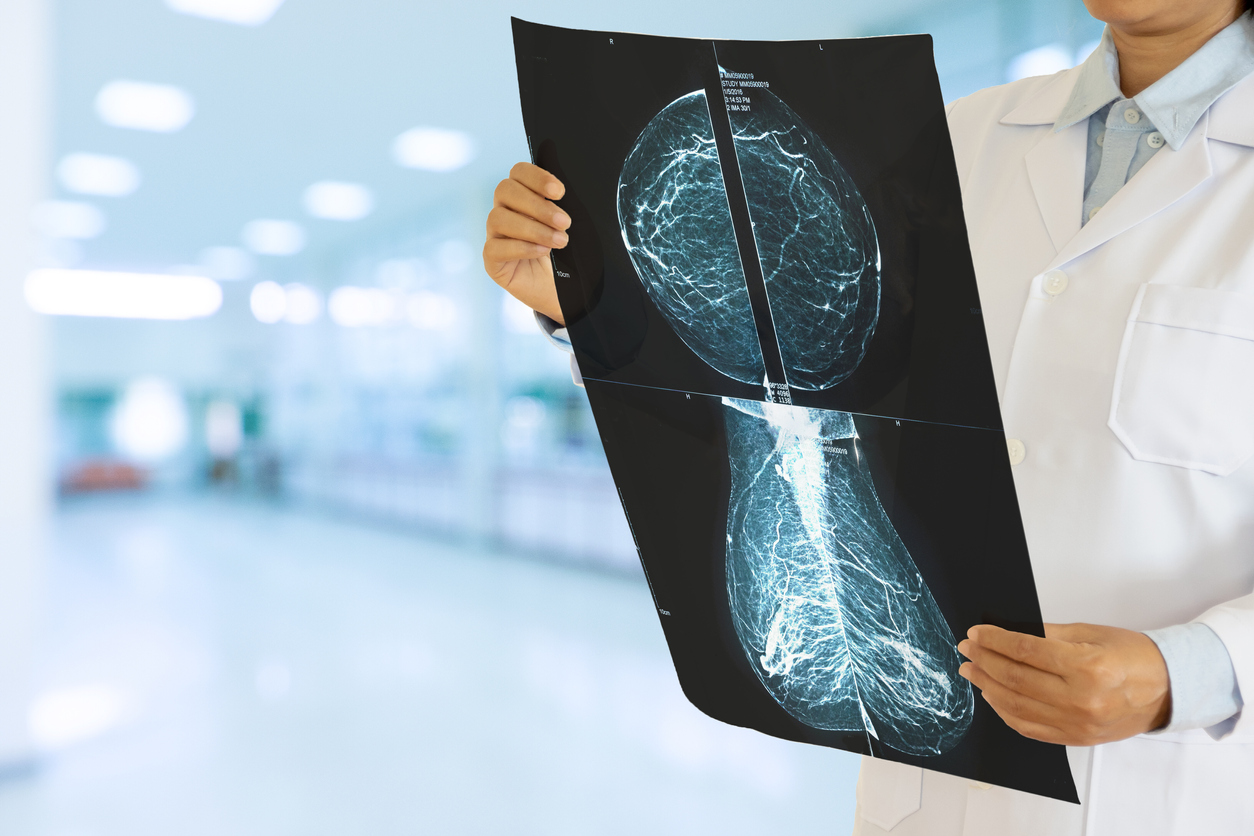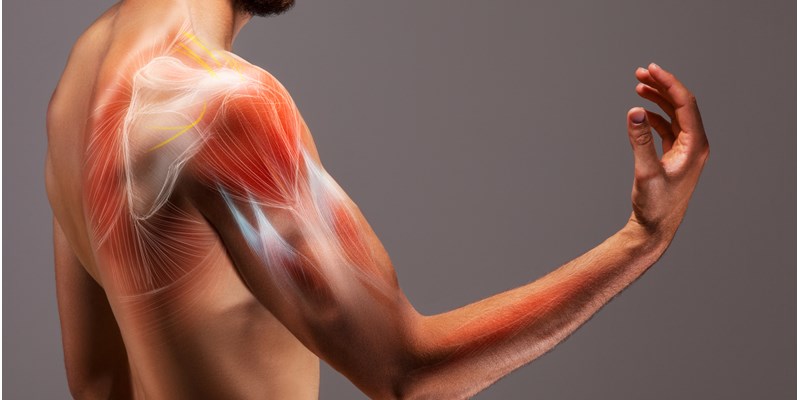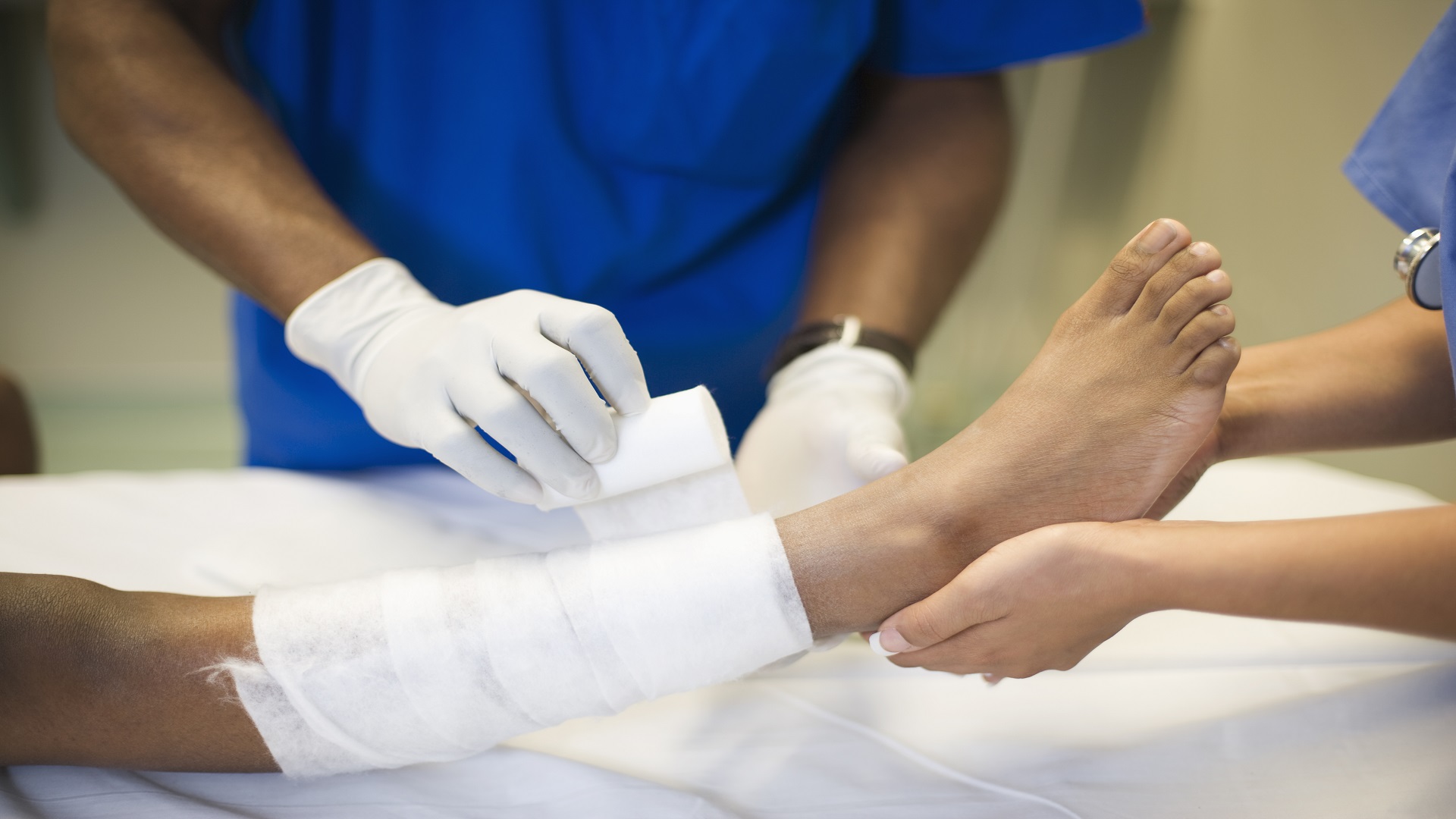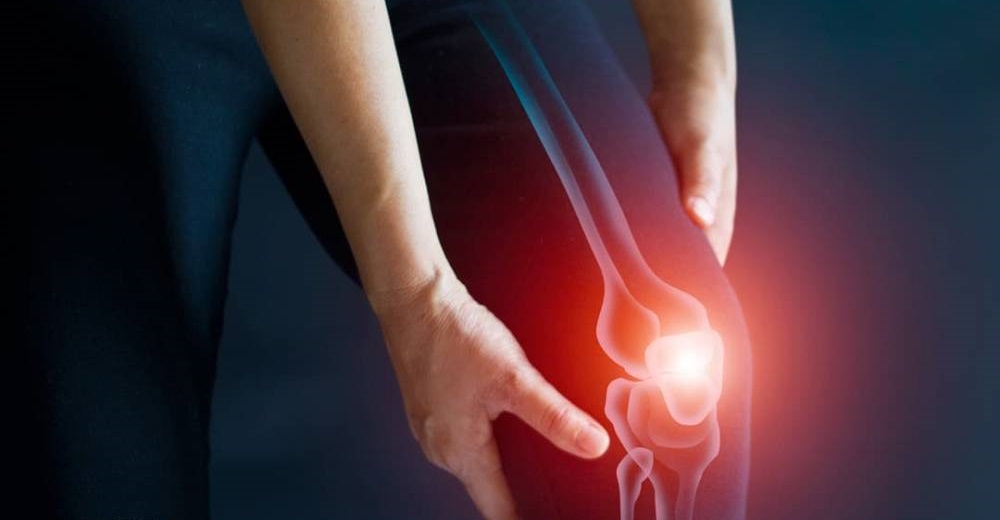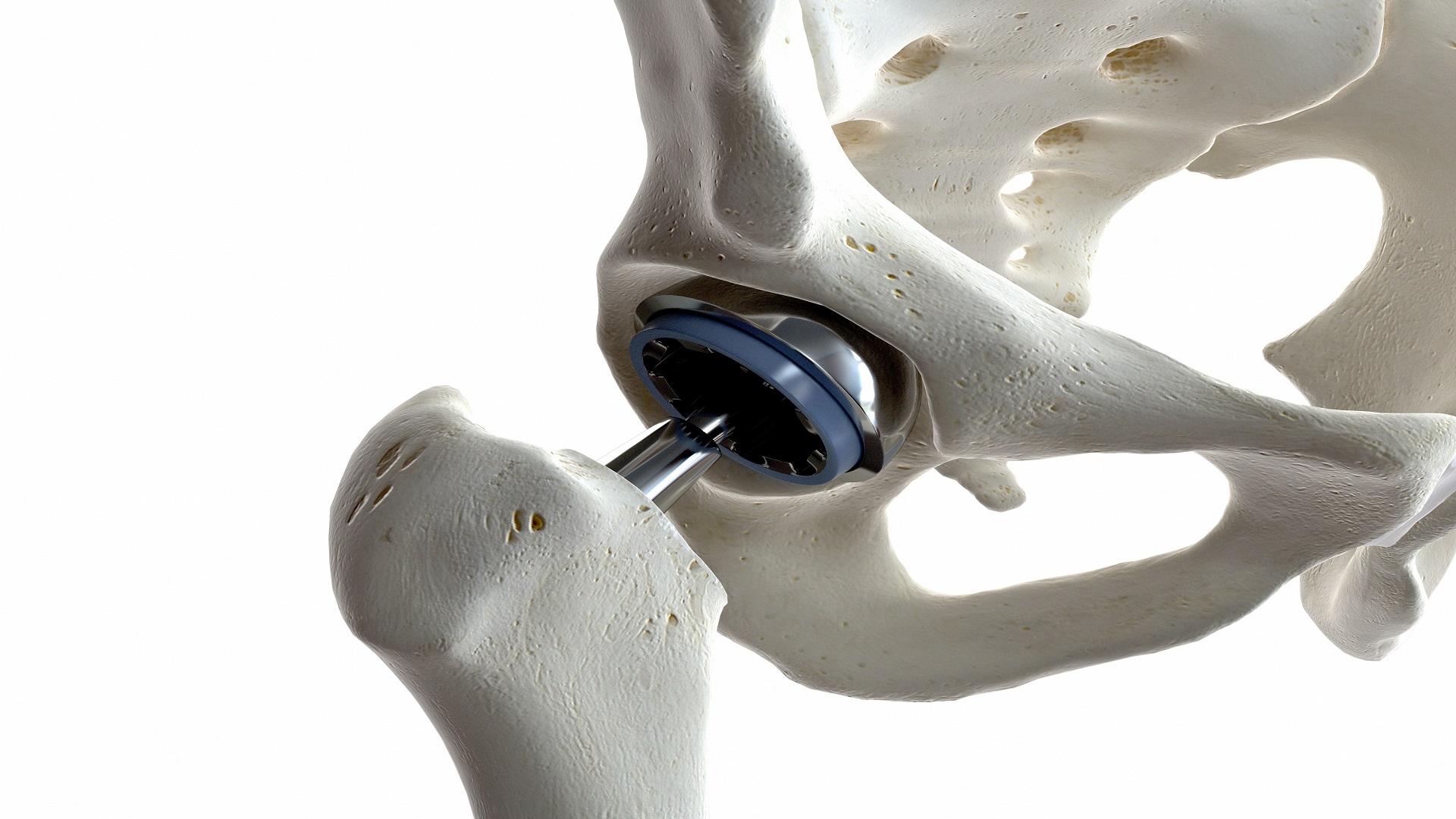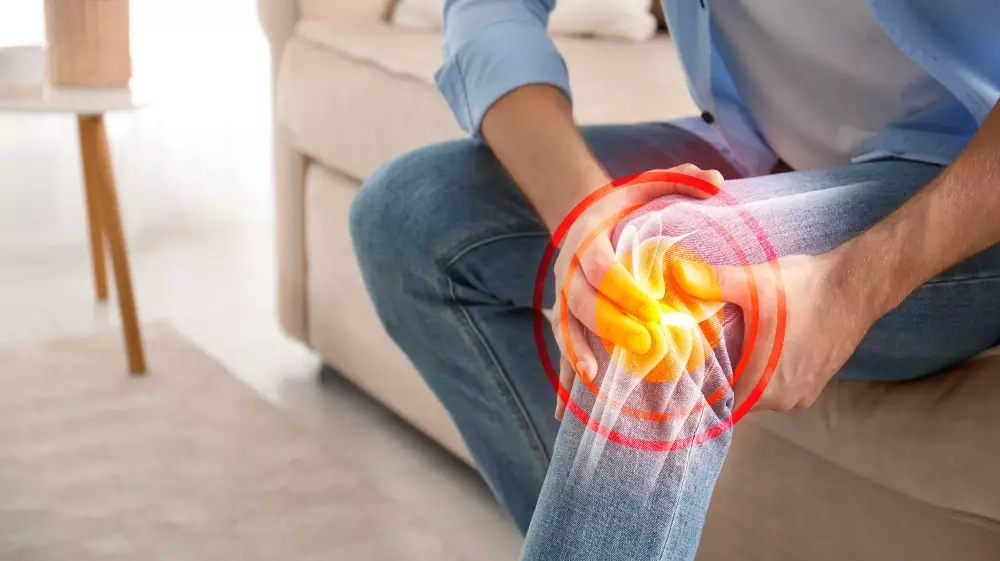What is joint pain? And what causes pain in all the body’s joints?
Joint Pain
Causes, Symptoms of Arthritis, and Treatment Methods
Arthritis is a common disease that affects many people around the world. This condition causes inflammation and swelling in the joints, leading to persistent pain and weakness in the movement of the affected joints. Arthritis can affect any joint in the body, from large joints such as those in the knee and hip to small joints like those in the hands and fingers.
The causes of arthritis are divided into two main types: rheumatoid arthritis and spondyloarthritis.
Rheumatoid Arthritis
Rheumatoid arthritis (RA) is one of the most widespread types of arthritis. It poses a real challenge for those who suffer from it due to its chronic nature and difficulty to be completely treated. Rheumatoid arthritis leads to joint damage and the surrounding tissues, resulting in symptoms such as pain, swelling, which negatively affect the life of the patient. Patients may experience fatigue, general weakness, and confusion, in addition to difficulty moving the affected joints. Rheumatoid arthritis can affect joints in any part of the body.
Spondyloarthritis
Spondyloarthritis refers to joint damage between the vertebrae in the spinal column. This condition can cause deformation and spasm in your spine and may affect your overall movement and the ability to perform daily activities correctly. Osteoarthritis is the most common type of spondyloarthritis. The gradual wear and tear of the cartilage between the vertebrae lead to symptoms such as chronic pain and stiffness in the neck or back, and in some cases, it is accompanied by pain in the limbs and loss of sensation. The occurrence of spondyloarthritis is common in the elderly, but it can affect anyone regardless of age.
Methods for Treating Arthritis
Regardless of the type of arthritis you are suffering from, there are several methods that you can use to alleviate the symptoms and improve your quality of life. These methods may include:
Medication Treatment:
Doctors may prescribe non-steroidal anti-inflammatory drugs (NSAIDs) to relieve pain and swelling. They might also prescribe disease-modifying antirheumatic drugs (DMARDs) that target the effects of arthritis. Some cases may require topical analgesics that are applied directly to the joints, or anti-inflammatory steroid injections directly into the joint for relief. Exercise and Physical Therapy:
Engaging in appropriate physical exercises and strengthening the muscles surrounding the joint can improve your mobility and reduce the symptoms of arthritis. A physical therapist may guide you through specific techniques and exercises to maximize the benefits of physical therapy sessions. Assistive Devices:
In some cases, assistive devices such as walkers, canes, or support devices can be used to reduce the pressure on the affected joints and improve balance and stability. Lifestyle Changes:
Achieving a healthy weight and reducing excess weight can be important to lessen the pressure on the joints and improve symptoms. You may need to make changes in your daily lifestyle, such as avoiding uncomfortable sitting positions, losing weight, and avoiding high-impact physical activities. Although arthritis can be a chronic and difficult condition, consulting with a doctor and following an appropriate treatment plan can help reduce symptoms and improve your quality of life. You should not hesitate to seek help from medical professionals for additional advice and support.
What Causes Pain in All the Joints of the Body?
Many people suffer from joint pain, and some may wonder about the possible causes of this pain throughout the body. Arthritis is one of the most common causes of joint pain and can have different types such as osteoarthritis and rheumatoid arthritis. In this article, we will review eight possible causes of body joint pain and how to deal with them.
Causes of Pain in All the Joints of the Body and How to Deal with Them:
Rheumatoid Arthritis: Rheumatoid arthritis is one of the most common types of arthritis, typically affecting the hands and feet. This disease can cause swelling and pain in the joints and may lead to the destruction of the cartilage that provides cushioning between the joints. It is advisable to visit a rheumatologist to diagnose the condition and establish an appropriate treatment plan.
Reactive Arthritis: Reactive arthritis occurs as a result of an infection in other parts of the body, such as the intestines, genital organs, or urinary tract. This inflammation can cause pain and swelling in the joints, and the patient may need to consult a specialist to determine the cause of the infection and prescribe the appropriate treatment.
Osteoporosis: Osteoporosis is a condition that affects many elderly people, where bone density and strength deteriorate. This condition can cause weakness in the joints and wear and tear of the cartilage, leading to pain in the body’s joints. Visiting an orthopedic doctor to diagnose the condition and develop a program to strengthen the bones and alleviate pain is recommended.
Gout: Gout is a condition that occurs due to high levels of uric acid in the body, leading to the deposition of uric acid crystals in the joints, especially in the feet and the big toe. Gout attacks are very painful and cause swelling and redness in the affected joints. It is advisable to visit a rheumatologist for the appropriate treatment to alleviate the pain and reduce gout attacks.
Erosive Arthritis: This type of arthritis occurs when the cartilage covering the ends of the bones in a joint is damaged, causing the bones to move abnormally and lead to painful friction. This friction results from excessive use of the joint or certain diseases that affect the cartilage. It is recommended to reduce activities that cause excessive friction and to follow a healthy diet and appropriate exercise routine.
Post-Traumatic Arthritis: Arthritis can occur as a result of direct injury to the joint, such as a bone fracture, a stretch or tear in the ligaments, or inflammation in the membranes surrounding the joint. It is advised to visit an orthopedic doctor to provide an accurate diagnosis and prescribe a suitable treatment plan.
Autoimmune Disorders: Autoimmune disorders include a range of conditions in which the body’s immune system attacks the cells of the joints, with rheumatoid arthritis being the most common type of arthritis in this category. It is recommended to visit a rheumatologist to diagnose the condition and develop a suitable treatment plan.
Overuse of Joints: Engaging in excessive activities that lead to overuse of the joints can cause irritation and wear and tear of the cartilage and surrounding tissues of the joint, resulting in pain and swelling. It is advisable to reduce activities that cause excessive strain on the joints and use techniques to relieve pressure on the joints, such as appropriate exercises and relaxation.
Individuals experiencing joint pain should consult a specialist to diagnose the condition and establish an appropriate treatment plan. It is also important to avoid self-medication and work on strengthening the muscles surrounding the joints and maintaining a healthy weight to reduce pressure on the joints.
What are the diseases that cause joint pain?
Joint pain is a common health problem that affects many people. There are several different diseases that can cause this pain. Below is a list of some of the most prominent diseases that may cause joint pain:
- Rheumatoid Arthritis: Rheumatoid arthritis is one of the most common diseases that lead to joint pain. This disease occurs when the immune system attacks joint tissue, causing permanent inflammation. It can affect multiple joints in the body, such as the joints in the fingers, wrists, feet, and knees.
- Infectious Arthritis: Infectious arthritis occurs when an infection invades a joint. Bacteria or viruses can cause this type of arthritis. Generally, infectious arthritis is known for severe pain, swelling, and difficulty moving the affected joint.
- Gouty Arthritis: Gouty arthritis is caused by high levels of uric acid in the blood, leading to the formation of crystal deposits in the joints. This disease typically affects the big toe joint and can cause severe pain, swelling, and intense inflammation of the joint.
- Degenerative Joint Pain: Degenerative joint pain is one of the leading diseases that cause joint pain, especially in the elderly. This type of disease occurs when the cartilage that covers the ends of the bones in the joints wears away, leading to joint pain, swelling, and stiffness.
- Psoriatic Arthritis: Psoriatic arthritis is caused by an immune system disorder where the body attacks its own cells, causing inflammation in the joints. It usually affects the fingertips and the toes and knees, causing severe pain, swelling, and sores in the joints.
- Arthritis due to Spinal Wear: Arthritis due to spinal wear occurs when the spine undergoes wear and tear, leading to joint pain. This disease is more prevalent in the elderly.
- Reactive Arthritis: Reactive arthritis occurs as a result of other illnesses, such as respiratory infections or bacterial infections. It usually affects multiple joints in the body and can cause sharp pain, swelling, and psychological distress.
Remember that in case of chronic or acute joint pain, it is recommended to visit a doctor for an accurate diagnosis and necessary examinations and analyses. Diseases related to the joints should be diagnosed and treated early to avoid deterioration of the condition and prevent potential complications.
Does Vitamin D Deficiency Cause Joint Pain?
Vitamin D deficiency is a common issue that affects many individuals around the world. This deficiency has been linked to various symptoms and health problems, including joint pain. In this article, we will take a look at the impact of vitamin D deficiency on joints and whether it can treat this pain.
Symptoms of Vitamin D Deficiency
Some people may suffer from vitamin D deficiency without realizing it. The symptoms of vitamin D deficiency can include:
- Fatigue and general weakness.
- Muscle weakness and pain.
- Joint pain.
- Depression and moodiness.
Joint Pain and Vitamin D Deficiency
Studies suggest that vitamin D deficiency can affect joint health and cause joint pain. Low levels of vitamin D can increase the risk of experiencing joint pain and may lead to rheumatoid arthritis, which commonly occurs in large joints such as the knees, legs, and hips.
Factors Improving Joints Thanks to Vitamin D
Vitamin D plays an essential role in maintaining joint health. There are several mechanisms by which it may contribute:
- Strengthening bones: Vitamin D works to enhance the absorption of calcium and phosphorus, which are fundamental components of bone formation. Having adequate levels of vitamin D helps build strong and healthy bones, which reduces the risk of joint inflammation.
- Supporting the immune system: Vitamin D can play a role in regulating your immune system. When you have a vitamin D deficiency, it can affect the immune response and increase the risk of joint inflammation.
- Reducing inflammation: Vitamin D deficiency may contribute to increased levels of inflammation in the body, which can lead to joint irritation and pain. Therefore, maintaining an adequate level of vitamin D can help reduce inflammation and alleviate the joint pain associated with it.
Vitamin D Treatment
If you suspect that you have a vitamin D deficiency and are suffering from joint pain, your doctor may recommend a test to check your vitamin D levels in your body. If vitamin D deficiency is diagnosed, it is likely that the doctor will prescribe vitamin D supplements to boost your levels. It is preferable to consult your doctor first to determine the appropriate dosage and the right time to take it.
If the joint pain is severe or persistent, it may also be best to consult a specialist in joints to better assess the condition and direct appropriate treatment.
Note that some individuals may have an allergy to vitamin D supplements or may have other health issues that could interfere with taking these supplements. Therefore, it is advisable to consult with a doctor before starting any treatment. If you are suffering from joint pain and have been diagnosed with a vitamin D deficiency, this deficiency might be one of the factors that increase the risk of joint pain. Improving the body’s vitamin D levels through nutrition or using dietary supplements can be an effective way to reduce pain and improve joint health.
However, it is preferable to consult a doctor before starting any treatment and to determine the appropriate dosage according to your individual health condition.
What are the symptoms of arthritis in women?
Arthritis is a common condition that people around the world suffer from, typically presenting as chronic pain and swelling in the joints. Although this disease affects both sexes, statistics indicate that women suffer from joint pain more than men.
If you are a woman suffering from joint pain or experience these symptoms frequently, it may be beneficial to learn more about the symptoms of arthritis and how to manage them. In this article, we will explore some common symptoms that may appear in women with arthritis.
- Joint pain: One of the common symptoms of arthritis is experiencing pain in the joints. Women may particularly suffer from pain in the knee, ankle, and foot joints. This pain can be chronic and worsen over time.
- Inflammation and swelling: Swelling and inflammation are apparent in joints affected by arthritis. For women with arthritis, this swelling can be noticeable in the affected joint, causing a feeling of bloating and pressure.
- Difficulty moving: Women with arthritis may face difficulty moving. This is especially apparent in joints that suffer from pain and swelling. It can affect the ability to walk normally and perform other daily activities.
Vitamin D Treatment
- If you suspect that you have a vitamin D deficiency and are suffering from joint pain, your doctor may recommend a test to check your vitamin D levels in your body. If vitamin D deficiency is diagnosed, it is likely that the doctor will prescribe vitamin D supplements to boost your levels. It is preferable to consult your doctor first to determine the appropriate dosage and the right time to take it.
- If the joint pain is severe or persistent, it may also be best to consult a specialist in joints to better assess the condition and direct appropriate treatment.
- Note that some individuals may have an allergy to vitamin D supplements or may have other health issues that could interfere with taking these supplements. Therefore, it is advisable to consult with a doctor before starting any treatment. If you are suffering from joint pain and have been diagnosed with a vitamin D deficiency, this deficiency might be one of the factors that increase the risk of joint pain. Improving the body’s vitamin D levels through nutrition or using dietary supplements can be an effective way to reduce pain and improve joint health.
- However, it is preferable to consult a doctor before starting any treatment and to determine the appropriate dosage according to your individual health condition.
What are the symptoms of arthritis in women?
Arthritis is a common condition that people around the world suffer from, typically presenting as chronic pain and swelling in the joints. Although this disease affects both sexes, statistics indicate that women suffer from joint pain more than men.
- Joint pain: One of the common symptoms of arthritis is experiencing pain in the joints. Women may particularly suffer from pain in the knee, ankle, and foot joints. This pain can be chronic and worsen over time.
- Inflammation and swelling: Swelling and inflammation are apparent in joints affected by arthritis. For women with arthritis, this swelling can be noticeable in the affected joint, causing a feeling of bloating and pressure.
- Difficulty moving: Women with arthritis may face difficulty moving. This is especially apparent in joints that suffer from pain and swelling. It can affect the ability to walk normally and perform other daily activities.
How to Get Rid of Joint Pain?
How to Get Rid of Joint Pain?: A List of 10 Tips to Alleviate Pain and Improve Joint Health
Joint pain is a common problem faced by many people of all ages. The cause of the pain could be irritation or inflammation in the joint, or it might result from an injury or a disorder in the skeletal structure. Regardless of the cause of the pain, many are looking for ways to alleviate the pain and improve joint health. In this article, we present a list of 10 effective tips to get rid of joint pain and enhance their health.
- Engage in Appropriate Physical Exercise: Exercise is one of the most important ways to strengthen the muscles around the joints and improve their flexibility. Choose exercises related to the painful joint, such as simple exercises to strengthen the knee or exercises targeting joints in the back. Consult a physiotherapist to get a suitable exercise program and learn the correct techniques to perform them.
- Maintain a Healthy Weight: Excess weight is an important factor in joint pain occurrence, especially in load-bearing joints like the knees and hips. Therefore, it’s crucial to lose weight in a healthy and sustainable way, by regulating a balanced diet that includes fruits, vegetables, whole grains, and healthy proteins.
- Use Heating and Cooling Treatments: Using heat or cold treatments may help relieve joint pain. Heating, such as with hot wax or a heating pad, can be used to soothe painful joints and improve circulation. Cooling, such as applying ice, can be used to reduce inflammation and numb the area.
- Relaxation and Stress Reduction: Stress and psychological pressures are believed to increase the severity of joint pain. Therefore, practice relaxation techniques, such as meditation, yoga, or deep breathing to eliminate stress and calm the nerves.
- Follow an Anti-inflammatory Diet: Some foods are believed to contain ingredients that may increase joint inflammation. Include anti-inflammatory foods in your diet, such as fatty fish like salmon, berries, celery, ginger, and turmeric.
- Pay Attention to Body Posture: An incorrect body posture can lead to increased pressure on the joints and increase the risk of injury. Sit and stand correctly, and use support means such as appropriate pillows for sitting.
- Use Assistive Devices: Some individuals may need to use assistive devices to relieve joint pain and improve their movement. These tools may include crutches, walkers, pressure-relieving shoes, or joint replacement devices.
- Physical Therapy Treatment: Consulting a physical therapist might be beneficial in relieving joint pain and improving their health. A physical therapy program may be prescribed, including direct sessions with an expert and exercises to be performed at home.
- Avoid Painful Activities: In case of injury or inflammation in the joint, you may need to avoid painful activities or those that put extra pressure on the joint. Ask experts about the best activities suitable for you.
- Consult a Doctor: If the pain persists or worsens, it is important to consult a doctor for necessary evaluation and to get the appropriate treatment. The doctor may need to conduct tests or order MRI scans to accurately diagnose the condition.
Do not hesitate to follow these tips to alleviate joint pain and improve their health. It must be remembered that professional medical care is best in case of symptoms worsening or persisting.

